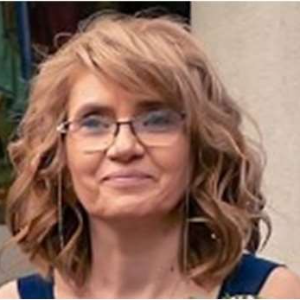Title : Mesoporous silica nanoparticles detection and quantification in cultured cells using hyperspectral imaging
Abstract:
The use of different types of nanoparticles (NPs) in biology, medicine, or other life sciences has a special development in recent years. The main challenge consists in understanding the interaction between nanoparticles and different biological components, going down to the subcellular level. This depends on NPs parameters (like chemical structure, shape, size, area, surface charge), as well as on cell type. The final destination of the NPs in living organisms is monitored by different techniques: electronic microscopy, atomic force microscopy, confocal microscopy, fluorescence microscopy. In this way are investigated different biophysical aspects of cell’s behaviour, the NPs traffic inside the cells, their final destination, changes in the cells functionality, the compartments where the NPs accumulation is significant, or other phenomena.
In this regard, we used hyperspectral imaging to investigate interaction between mesoporous silica nanoparticles functionalized with organic groups coated or no with a biopolymer and two tupes of cell lines: normal skin fibloblast BJ cell line and breast ductal carcinoma BT747 cell line. Cultured cells were prepared using standard protocols. Our goal is to observe the cytotoxic effect of these types of nanoparticles on
normal and malignant cells. Their preferential accumulation inside cells was quantified by hyperspectral images processing.
We used the Cytoviva system working in the dark field configuration equipped with the hyperspectral module to record images on two categories of samples: 1) the calibration sample (consisting of mesoporous silica NPs in culture medium) which allows recording the characteristic scattering spectrum of each type of NPs, and 2) the cellular sample (consisting of cells incubated without/with mesoporous silica NPs). The specific spectral fingerprint of each type of NPs dispersed in the culture medium is saved as spectral library and subsequently used to identify the NPs in cells by running the built-in spectral angle mapper (SAM) under Environment for Visualizing Images (ENVI) software.
We developed specific home-made MATLAB scripts to process images with the aim to compute relevant parameters for establishing the density of nanoparticles inside the cells. Thanks to the improved dark field system, cell details and edges appear very bright in hyperspectral images, on an almost zero background. In the first step, the images are segmented on singular cells or into groups of cells using an adapted procedure based on OUTSU method. This allows us to automatically calculate the area of the cells in the focused cross-section and then the fraction occupied by NPs. Distances from the nucleus of different NPs aggregates is computed. Comparisions between different types of functionalized NPs internalization in the two cell sublines were realized.
In conclusion, we will present our contribution to the preparation of new types of functionalized NPs, their scattering spectral fingerprint, and the results from the scripts developed by us regarding the area occupied by nanoparticles and the distances to the nucleus of internalized NPs aggregates.
Audience Take Away:
- The audience will be able to use information about the enhanced darkfield microscopy, hyperspectral imaging, automated images processing.
- Enhanced darkfield microscopy, hyperspectral imaging can be used to observe large fields of cells after they have been incubated with nanoparticles.
- Hyperspectral images from the presentation could be used to explain darkfield technique. Scattering spectral profiles could be used to explain the usefulness of spectroscopy in chemical identification.
- The work of designers of functionalized nanoparticles is made easier if cell cultures incubated with nanoparticles are observed by a fast, efficient and low-cost optical method, and hyperspectral imaging under darkfield microscopy satisfies this need.
- Our scripts design ensures results that are obtained automatically in a short time by evaluating hundreds of images.


